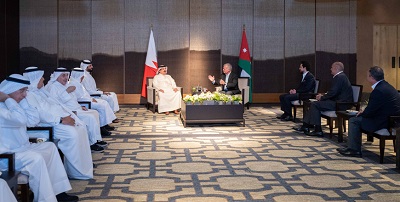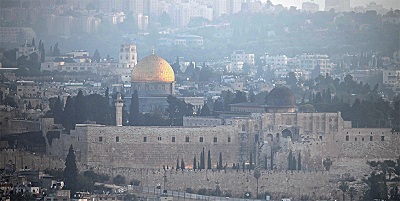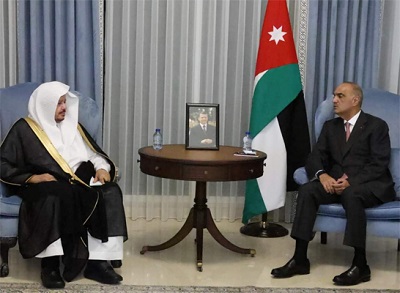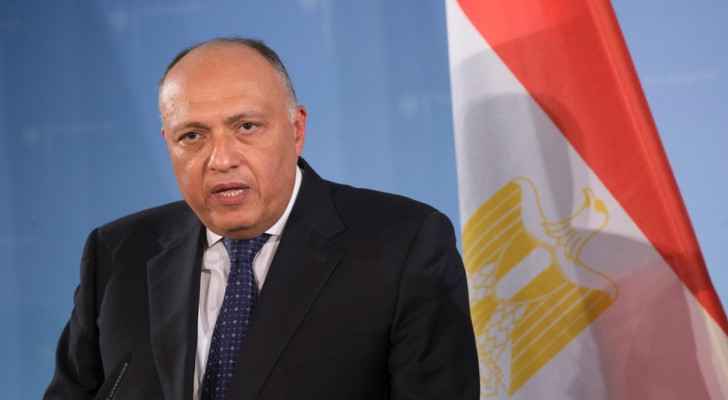A Mission From Khamenei: Javad Zarif for President? - By Camelia Entekhabifard, Asharq Al-Awsat
In about 15 days, on July 14, we reach the fifth anniversary of the Iran Deal: a treaty that promised Iranians economic prosperity, security, calm, and normalization of relations with the West.
For the West and Iran’s neighbors, Iran Deal was supposed to usher in a new Iran that would engage in widespread reform, normalize its relations with the world, stop its regional provocations, and work to reduce tensions.
On Tuesday, June 30, when the report of the United Nations Secretary-General about Iran’s observance of the resolution 2231 (which compliments the Iran Deal), covering the last six months, was read out, the world heard a different narrative on Iranian actions.
The US wants to extend the arms embargo on Iran which, according to the Iran Deal, was supposed to run out by October.
The report published last month by the UN investigation team shows that the missiles used last September to hit Saudi Arabia’s oil installations were of Iranian origin.
The attack on Saudis took place when Iran’s President Hassan Rouhani was in New York to attend the United Nations General Assembly.
There have also been other attacks: Oil tankers were attacked in Fujairah, United Arab Emirates; a Japanese tanker was attacked in the Gulf of Oman just when the Japanese prime minister was in Iran. Documents presented to the UN attribute these attacks to Tehran.
The Iran Deal had other promises: Iran was supposed to change and stop threatening its neighbors and Western interests.
In yesterday’s video-chat session of the security council, most countries, except China and Russia, said that Iran’s missile activities contradict the UNSC 2231.
Naturally, the US’s draft resolution against Iran will not be approved by all members. Any extension of the arms embargo will be vetoed by Russia and China. But the US reached its objective in yesterday’s security council session.
The US has a calculated policy. If the arms embargo is not extended, it wants to activate the snapback mechanism, a component of the Iran Deal that will bring back all the sanctions in place before the deal.
All these are possible before the expiry of the arms embargo in October and it will lead to a complete collapse of the Iranian economy and sever crisis inside the country.
It appears that Iran’s diplomatic corps is looking to find a way out of the current purgatory it finds itself in before the US presidential elections in November. But it also appears that it is already failing.
For about a year into his term, Trump kept signing waivers and asking Iran to come back to the negotiation table. When Iran didn’t, the US left the Iran Deal. Iran has repeatedly turned down American requests for talks.
In the months leading to the US presidential elections, Trump wants to realize his promises more than ever. He won’t let Iran simply wait for the elections.
Even if the Democratic candidate, Joe Biden, wins, the US won’t come back to the Iran Deal.
Since the international community and the International Atomic Energy Agency have flagged Iran’s violations, the next US president won’t be able to go back to the Iran Deal unless a new deal is reached.
The Iran Deal only focused on Iran’s atomic program and it lacked other aspects that could have made it a comprehensive deal.
Part of the haste with which the Iran Deal was reached was also due to US elections in 2016. This was called a historic deal that could help the Democratic candidate Hillary Clinton.
The Iran Deal’s one-sidedness was pointed out by its critics as a weakness. Especially since Iran had no desire to talk about other issues such as Syria and the region.
Iran’s Arab neighbors were unhappy with Tehran’s interference in their domestic affairs and its constant threatening of them with missile attacks and cutting of the oil. They thus joined the coalition aimed at breaking the Iran Deal.
On the opposite side, Rouhani and Zarif proposed the HOPE or Hormuz Peace Endeavor, a non-aggression proposal that sounded more like intimidation and warning of neighbors than a friendly proposal.
Yesterday, Zarif once more spoke of a security pact proposed by Iran to the countries of the region. Iran wants all countries of the region to be strong like Iran, he said, hence Rouhani’s HOPE proposal. The proposal, however, basically means that countries should accept Iran’s domination of the region or face its missiles and drones.
At the end of his speech, Zarif quoted Mohammad Mossadeq, Iran’s nationalist prime minister, to remind the Iranians of his patriotic speech in the UN Security Council in 1951, in which he had stood up to the US and the UK.
In the end, Zarif quoted Mossadeq’s speech to the Security Council: “The council will not have failed to note the cogency of our arguments to the law. Yet this is not a legal body but primarily a political body.”
If Trump is after winning votes for his re-elections shouldn’t we also believe that Zarif is exactly the revolutionary young candidate that Iran’s supreme leader says he wants as the next president?
This is a good opportunity for Zarif to compare himself to Mossadeq and prepare the grounds for a presidential run in 2021.
In 2013, while backing the Iranian nuclear talks that Zarif led with the P5+1, Ayatollah Khamenei called him a child of the revolution: “These are agents of the Islamic Republic of Iran. They are our own people, children of the revolution. They are on a mission. It is a very difficult mission. They are working hard to make it happen.”
The ‘child of the revolution’ can now be put to a new mission in 2021; a mission that has started with his caricature of a Mossadeq act.
Whatever happens in the US presidential elections in November, Iran will have a tumultuous year ahead.
Latest News
 King, Bahrain monarch stress need to maintain Arab coordination
King, Bahrain monarch stress need to maintain Arab coordination Security Council to vote Thursday on Palestinian state UN membership
Security Council to vote Thursday on Palestinian state UN membership Dubai reels from floods chaos after record rains
Dubai reels from floods chaos after record rains Khasawneh, Saudi Shura Council speaker discuss bilateral ties, regional developments
Khasawneh, Saudi Shura Council speaker discuss bilateral ties, regional developments Egyptian Foreign Minister condemns potential Palestinian displacement as 'war crime'
Egyptian Foreign Minister condemns potential Palestinian displacement as 'war crime'
Most Read Articles
- Senate president, British ambassador discuss strategic partnership, regional stability
- Jordan urges UN to recognise Palestine as state
- Temperatures to near 40 degree mark next week in Jordan
- JAF carries out seven more airdrops of aid into Gaza
- Safadi, Iranian counterpart discuss war on Gaza, regional escalation
- UN chief warns Mideast on brink of ‘full-scale regional conflict’
- US vetoes Security Council resolution on full Palestinian UN membership
- Google fires 28 employees for protesting $1.2 billion cloud deal with “Israeli” army
- Biden urges Congress to pass 'pivotal' Ukraine, Israel war aid
- Israeli Occupation strike inside Iran responds to Tehran's provocation, reports say